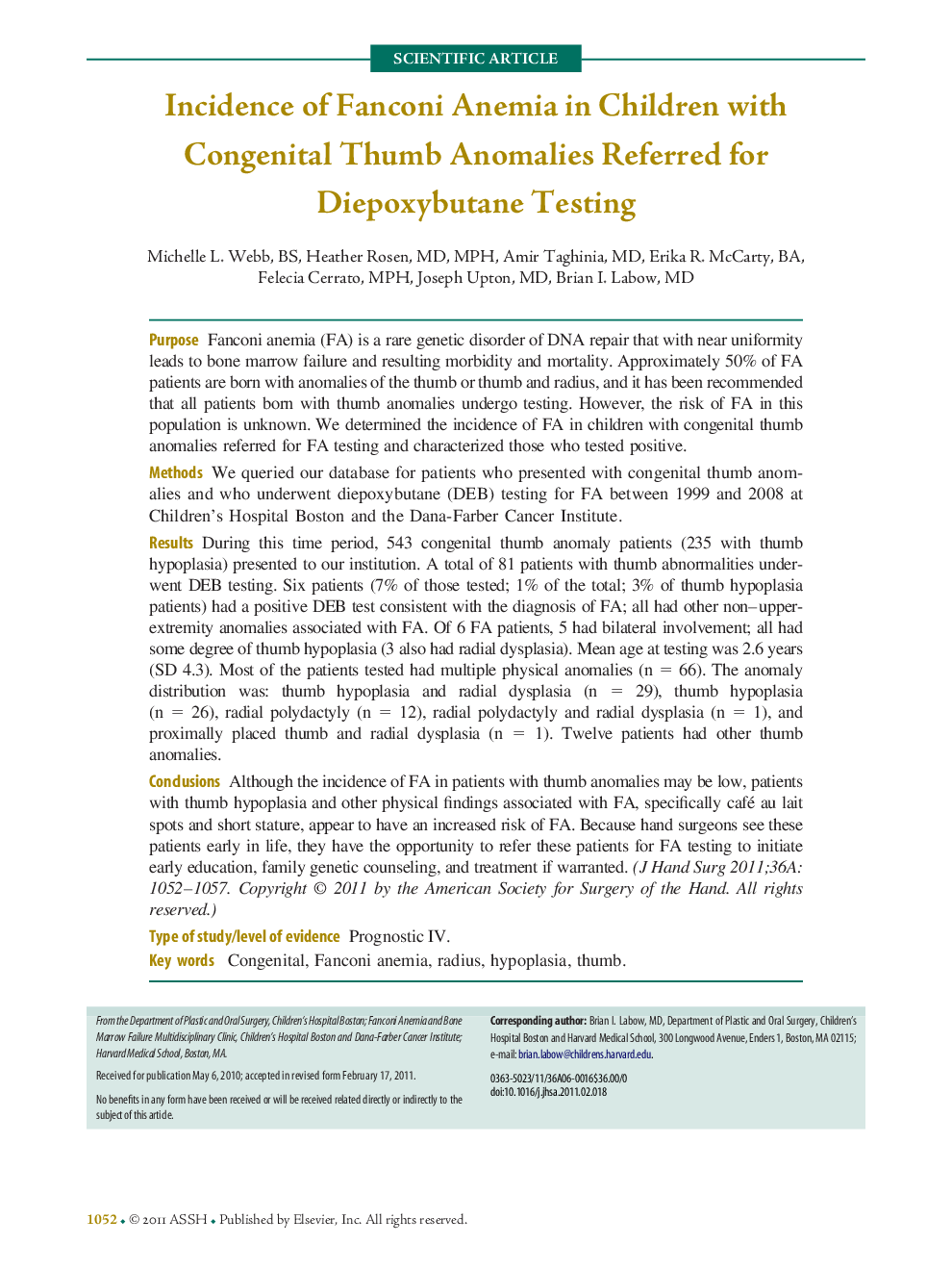| کد مقاله | کد نشریه | سال انتشار | مقاله انگلیسی | نسخه تمام متن |
|---|---|---|---|---|
| 4067207 | 1604408 | 2011 | 6 صفحه PDF | دانلود رایگان |

PurposeFanconi anemia (FA) is a rare genetic disorder of DNA repair that with near uniformity leads to bone marrow failure and resulting morbidity and mortality. Approximately 50% of FA patients are born with anomalies of the thumb or thumb and radius, and it has been recommended that all patients born with thumb anomalies undergo testing. However, the risk of FA in this population is unknown. We determined the incidence of FA in children with congenital thumb anomalies referred for FA testing and characterized those who tested positive.MethodsWe queried our database for patients who presented with congenital thumb anomalies and who underwent diepoxybutane (DEB) testing for FA between 1999 and 2008 at Children's Hospital Boston and the Dana-Farber Cancer Institute.ResultsDuring this time period, 543 congenital thumb anomaly patients (235 with thumb hypoplasia) presented to our institution. A total of 81 patients with thumb abnormalities underwent DEB testing. Six patients (7% of those tested; 1% of the total; 3% of thumb hypoplasia patients) had a positive DEB test consistent with the diagnosis of FA; all had other non–upper-extremity anomalies associated with FA. Of 6 FA patients, 5 had bilateral involvement; all had some degree of thumb hypoplasia (3 also had radial dysplasia). Mean age at testing was 2.6 years (SD 4.3). Most of the patients tested had multiple physical anomalies (n = 66). The anomaly distribution was: thumb hypoplasia and radial dysplasia (n = 29), thumb hypoplasia (n = 26), radial polydactyly (n = 12), radial polydactyly and radial dysplasia (n = 1), and proximally placed thumb and radial dysplasia (n = 1). Twelve patients had other thumb anomalies.ConclusionsAlthough the incidence of FA in patients with thumb anomalies may be low, patients with thumb hypoplasia and other physical findings associated with FA, specifically café au lait spots and short stature, appear to have an increased risk of FA. Because hand surgeons see these patients early in life, they have the opportunity to refer these patients for FA testing to initiate early education, family genetic counseling, and treatment if warranted.Type of study/level of evidencePrognostic IV.
Journal: The Journal of Hand Surgery - Volume 36, Issue 6, June 2011, Pages 1052–1057